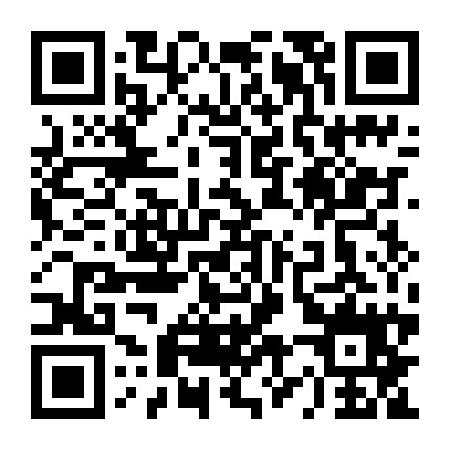英语考试的备考,参考历年真题是一个很重要的备考过程,今天新东方在线小编给大家整理了浙江大学2014年考博英语真题,帮助大家更好的备考,考博英语考试,一起来看看吧!
Passage Three
Do we need laws that prevent us from running risks with our lives? If so, then perhaps laws are needed prohibiting the sale of cigarettes and alcoholic drinks. Both products have been known to kill people. The hazards of drinking too much alcohol are as bad as or worse than the hazards of smoking too many cigarettes. All right then, let’s pass a law closing the liquor stores and the bars in this country. Let’s put an end once and for all to the ruinous disease from which as many as 10 million Americans currently suffer — alcoholism.
But wait. We’ve already tried that. For 13 years, between 1920 and 1933, there were no liquor stores anywhere in the United States. They were shut down abolished by an amendment to the Constitution and by a law of Congress. After January 20, 1920, there was supposed to be no more manufacturing, selling, or transporting of “intoxicating liquors”. Without any more liquor, people could not drink it. And if they did not drink it, how could they get drunk? There would be no more dangers to the public welfare from drunkenness and alcoholism. It was all very logical. And yet prohibition of liquor, beer, and wine did not work. Why?
Because, law or no law, millions of people still liked to drink alcohol. And they were willing to take risks to get it. They were not about to change their tastes and habits just because of a change in the law. And gangs of liquor smugglers made it easy to buy an illegal drink—or two or three. They smuggled millions of gallons of the outlawed beverages across the Canadian and Mexican borders. Drinkers were likely to know of an illegal bar that served Mexican or Canadian liquor. Crime and drunkenness were both supposed to decline as a result of prohibition. Instead, people drank more alcohol than ever — often poisoned alcohol.
On December 5, 1933, they removed Prohibition by approving the 21st Amendment to the Constitution.
66. Which of the following was NOT a characteristic reason for the proposal of the 18th Amendment to the Constitution and the Volstead Act?
A. There would be no further danger to the public from alcoholism.
B. There would be a rise in the cost of alcoholic beverages.
C. Without liquor, people would not drink.
D. People would not become drunk of create a public nuisance.
67. During Prohibition, illegal alcohol was .
A. sold openly
B. no longer a temptation
C. a major factor in the passage of the Volstead Act
D. brought across the Mexican and Canadian borders
68. During Prohibition, people .
A. lived in fear of the law
B. were willing to risk arrest for the pleasure of liquor
C. recklessly endangered their communities
D. were respectful of the legal sanctions placed on them
69. When enacting the prohibition law, government officials assumed that .
A. every American would buy alcohol illegally
B. all criminal activities would cease
C. patrols of the Canadian border would halt the sale of alcohol
D. the social threat from drunkenness would decline
70. It can be inferred from the passage that .
A. the Congress was wise to repeal Prohibition
B. the Prohibition Era was characterized by a decrease in crime and drunkenness
C. during Prohibition, most Americans stopped drinking
D. laws should be passed to ban the sale of alcoholic beverages
考博必备!历年真题及答案
考博精品好课,就选新东方!
本文关键字: 考博英语真题

 资料下载
资料下载
【必看】考博英语词汇10000例精解
发布时间:2020-09-02关注新东方在线服务号
回复【10000】免费获取
医学考博英语作文核心基础词汇整理
发布时间:2020-04-15关注新东方在线服务号
回复【医学考博】获取
医学考博英语阅读理解练习资料
发布时间:2020-04-15关注新东方在线服务号
回复【医学考博】获取
法学考博英语高频词汇word版
发布时间:2020-04-15关注新东方在线服务号
回复【医学考博】获取
医学博士英语统考真题及解析
发布时间:2019-12-26关注新东方在线服务号
回复【考博真题】获取
全国医学博士外语统一考试真题
发布时间:2019-12-26关注新东方在线服务号
回复【考博真题】获取
中科院考博英语复习备考实战经验分享
发布时间:2019-12-26关注新东方在线服务号
回复【考博经验】获取
中科院考博英语真题练习资料
发布时间:2019-12-26关注新东方在线服务号
回复【考博真题】获取

关注新东方在线服务号
关注新东方在线服务号,
免费获取考博必看干货资料

 推荐阅读
推荐阅读
沈阳工业大学2022年博士研究生招生考试英语真题B卷
来源 : 沈阳工业大学 2022-12-26 16:19:18 关键字 : 沈阳工业大学2022博士英语真题
沈阳工业大学2022年博士研究生招生考试英语真题A卷
来源 : 沈阳工业大学 2022-12-26 16:18:19 关键字 : 沈阳工业大学2022博士英语真题
沈阳工业大学2021年博士研究生招生考试英语真题B卷
来源 : 沈阳工业大学 2022-12-26 16:09:06 关键字 : 沈阳工业大学2021博士英语真题
沈阳工业大学2021年博士研究生招生考试英语真题试卷A卷
来源 : 沈阳工业大学 2022-12-26 16:07:31 关键字 : 沈阳工业大学2021博士英语真题
沈阳工业大学2020年博士研究生招生考试英语真题试卷
来源 : 沈阳工业大学 2022-12-26 16:04:42 关键字 : 沈阳工业大学2020年博士英语真题


 考博好课推荐
考博好课推荐
基础薄弱,备考迷茫,送纸质资料
价格 : ¥2280元
资深教师,教学简明,直接有效!
价格 : 0元
 资料下载
资料下载
关注新东方在线服务号
回复【10000】免费获取
关注新东方在线服务号
回复【医学考博】获取
关注新东方在线服务号
回复【医学考博】获取
关注新东方在线服务号
回复【医学考博】获取
关注新东方在线服务号
回复【考博真题】获取
关注新东方在线服务号
回复【考博真题】获取
关注新东方在线服务号
回复【考博经验】获取
关注新东方在线服务号
回复【考博真题】获取

 阅读排行榜
阅读排行榜
 相关内容
相关内容